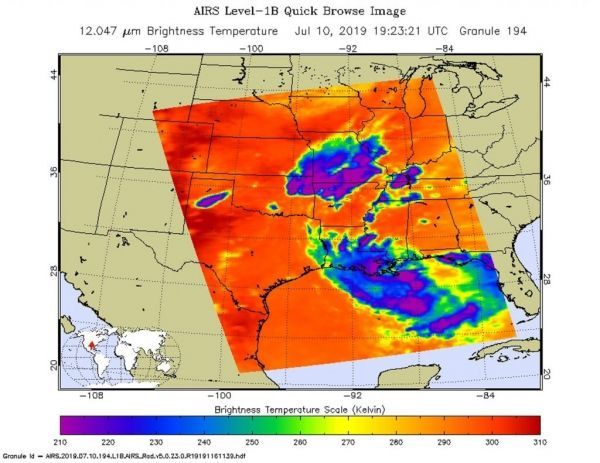NASA’s Aqua satellite passed over the Gulf of Mexico and took the temperature of Potential Tropical Cyclone 2 as it moved westward through the Gulf of Mexico. NASA found the very cold cloud tops indicating the storm had potential for dropping heavy rain.
Infrared light enables NASA to take the temperatures of clouds and thunderstorms that make up tropical cyclones. The stronger the storms are indicate that they extend high into the troposphere and have cold cloud top temperatures.
An infrared look by NASA’s Aqua satellite on July 10, 2019 at 3:23 p.m. EDT (1923 UTC) revealed where the strongest storms were located within Potential Tropical Cyclone 2. The Atmospheric Infrared Sounder or AIRS instrument aboard NASA’s Aqua satellite analyzed cloud top temperatures and found cloud top temperatures of strongest thunderstorms as cold as or colder than minus 63 degrees Fahrenheit (minus 53 degrees Celsius) circling the center (which is still not well-defined) and in thunderstorms northwest of the center, extending over southern Louisiana. Cloud top temperatures that cold indicate strong storms that have the capability to create heavy rain.
Read more at NASA / Goddard Space Flight Center
Image: On July 10, 2019 at 3:23 p.m. EDT (1923 UTC) the AIRS instrument aboard NASA’s Aqua satellite analyzed cloud top temperatures of Potential Tropical Cyclone 2 in infrared light. AIRS found coldest cloud top temperatures (purple) of strongest thunderstorms were as cold as or colder than minus 63 degrees Fahrenheit (minus 53 degrees Celsius). CREDIT: NASA JPL / Heidar Thrastarson


